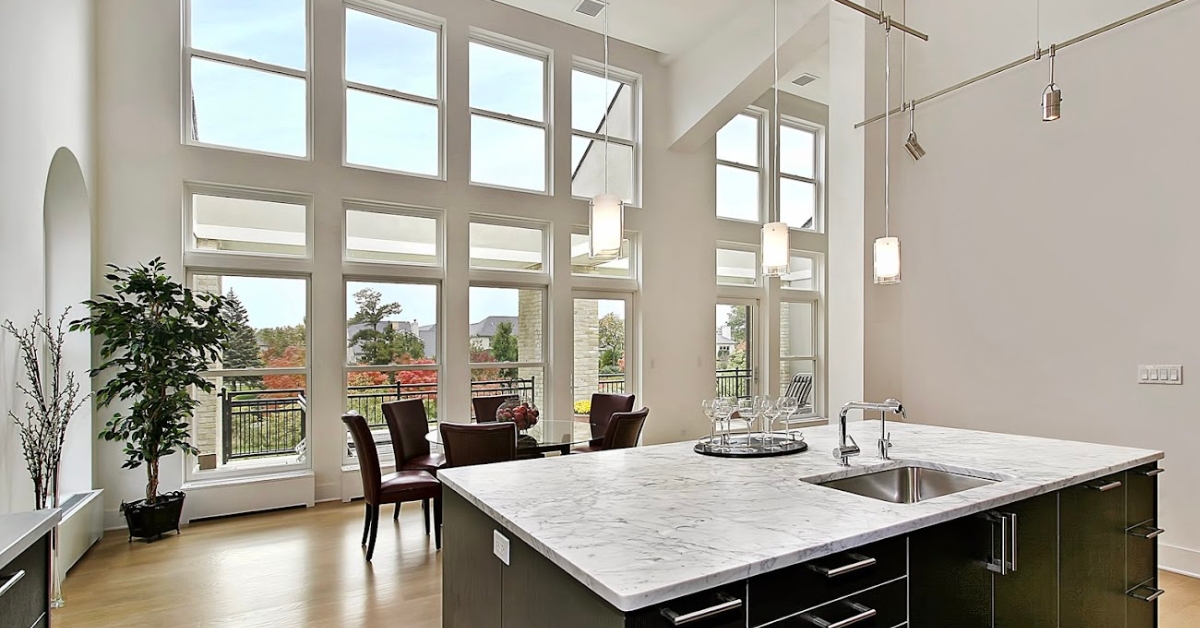Guide to 9 Common Window Types for Your Home

Windows are an essential part of any home, allowing natural light to enter and offering views of the outdoors. With so many choices, you might be wondering which type is best for your home.
Each window type has its own advantages and disadvantages. Numerous types are available on the market today, and some work better than others for your home.
In this article, we will discuss the different types of windows commonly used in homes and their unique features.
Common Window Types
The windows you choose for your home must be carefully considered for their functionality, energy efficiency, and affordability. After all, they each provide you with something different. Here are some common window types:
Single-hung Windows
Single-hung windows are the most common type of window found in homes. They are composed of two panels, one fixed and the other movable. The movable panel slides vertically along the track and can be opened for ventilation. This window type is ideal for homes with limited space as it opens vertically, requiring no additional clearance.
The single-hung window is a traditional style that opens by raising the bottom sash. The top glass of a single-hung window is fixed in place.
- Fixed meeting rail provides structural stability
- Easy installation due to fewer moving parts
Double-hung Windows
Double-hung windows are similar to single-hung windows but offer two movable panels that slide vertically. This window type is suitable for homes with children as it allows for better ventilation control, with the top panel being opened while the bottom panel remains closed.
A more traditional style, the double-hung window opens by raising the bottom sash or lowering the top sash of the window.
- Double-hung windows allow ventilation from the top or bottom of the window (or both)
- Both sashes tilt in for easy cleaning from inside your home
Casement Windows
Casement windows have a hinge on one side and open outward using a crank handle. This type of window is ideal for areas where the window is difficult to reach, as it can be opened and closed easily. Casement windows also offer an unobstructed view and can provide better ventilation control.
Awning Windows
Awning windows are similar to casement windows but have a hinge at the top and open outward from the bottom. This type of window is ideal for areas where ventilation is necessary, but privacy is desired, such as bathrooms or bedrooms.
Slider Windows
Slider windows consist of two panels, one of which slides horizontally to open. This window type is ideal for areas where space is limited, as the window does not open outward, requiring no additional clearance. Slider windows can also be used for large openings, allowing for a larger view of the outdoors.
Single Sliding Windows
Single sliding windows are a traditional style window that opens by sliding the operable sash toward the center of the window. Single sliding windows can be manufactured so that either the left or right sash is operable.
- Operable sash glides on rollers
- A fixed meeting rail provides structural stability
Double Sliding Windows
Double sliding windows are a traditional style window that opens by sliding either sash toward the center of the window. This type allows ventilation from either side of the window.
- Sashes glide on rollers
- Both sashes can be removed from inside the home for easy cleaning
Bay Windows
A bay window is a decorative window that projects outward, creating a sense of open space. Bay windows allow for more light. The most popular configuration is a central fixed window flanked by two other windows, usually casement or double-hung styles that permit ventilation. Bay windows protrude farther from the wall out into the exterior space than a bow window.

Bay windows are a combination of three or more windows that project outward from the home. This type of window is ideal for homes with a view or a large amount of natural light. Bay windows can also provide additional seating or storage space as the window projects outward.
Bow Windows
Bow windows are similar to bay windows, but with a curved design, allowing for a more rounded projection from the home. This type of window is ideal for larger openings and can provide a unique design element to the home.
Bow windows contain four or more windows and also project outward. The windows join to form a gentle curve, or a “bow” shape. Similar to a bay window, a bow window are typically fixed and its side windows are operable.
- Projects outward for a dramatic look
- Allows for plenty of natural light
- Constructed with fixed center windows flanked by outer windows that open for ventilation
Picture Windows
Picture windows are fixed windows that offer a clear view of the outdoors but do not open. This type of window is ideal for areas where ventilation is not necessary, such as a living room or dining room. Picture windows can also be used in combination with other window types for a unique design element.
Picture windows provide an unobstructed view of the outdoors while allowing a good deal of natural light indoors. Picture windows can be used alone, but because they are stationary you will often find them used in groupings with window styles that allow for ventilation.
Custom-made geometric shapes are also popular as accent windows. Half-rounds, quarter-rounds, triangles and other geometric window shapes can complement the architecture of any structure.
- Provides an unobstructed viewing area
- Allows more natural light into an interior
- Complements the architecture of a building
Transom Windows
Transom windows are small windows located above a door or another window. This type of window is ideal for areas where additional natural light is necessary, but privacy is desired. Transom windows can also provide a unique design element to the home.
Transom windows are also stationary. These are typically smaller rectangular windows used as accents above or beside larger windows and doors.
Conclusion
In conclusion, selecting the right window type for your home depends on your personal preference, budget, and practicality. The above-mentioned common window types offer unique features that can cater to different needs and requirements. When selecting a window type, it is important to consider factors such as energy efficiency, maintenance, and style. It is also recommended to consult a professional window installer to ensure proper installation and optimal performance.
Did you find this info useful? It's ok to share:






